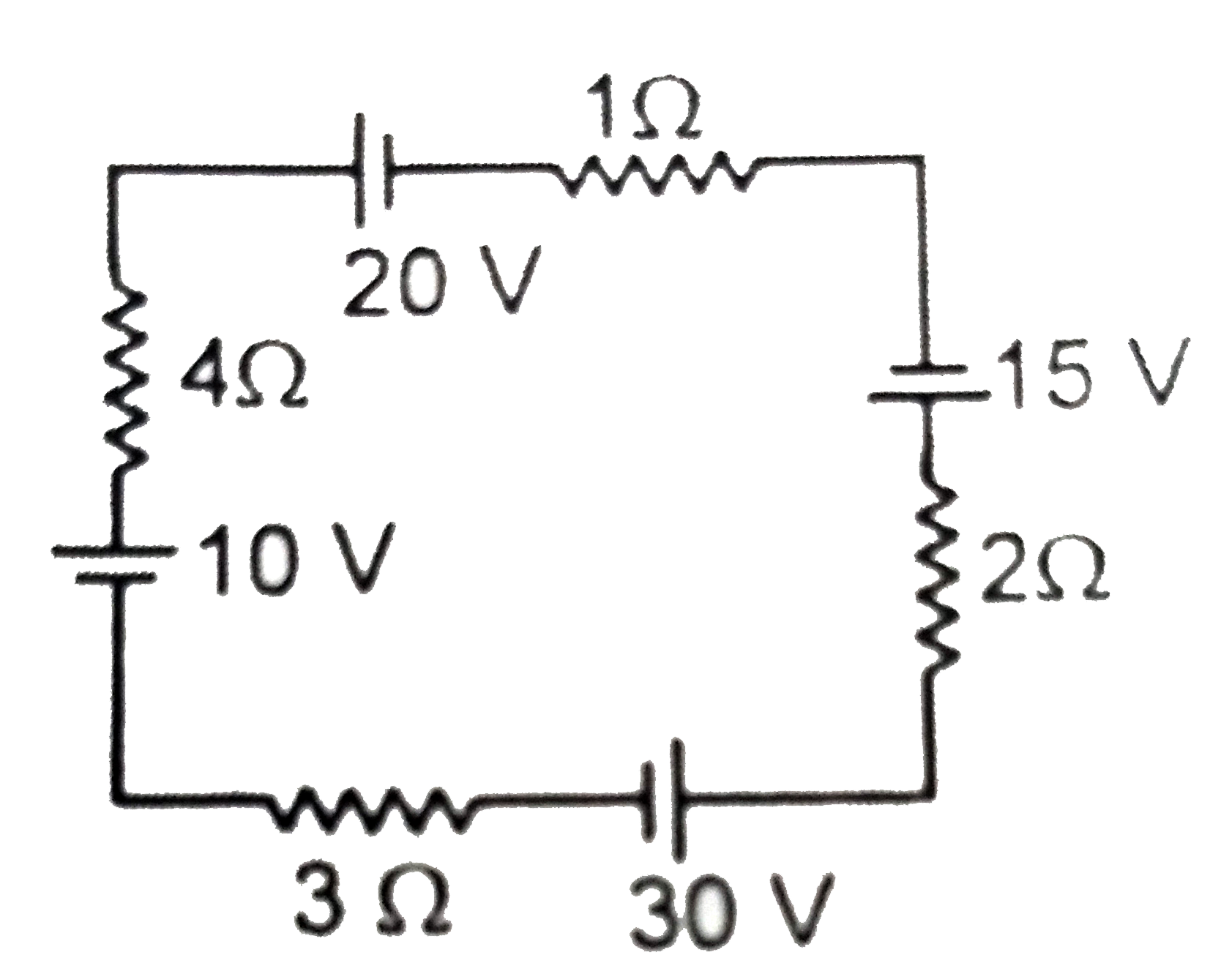The current in the circuit will be
510A
550A
510 A
520 A
The correct Answer is:B
To find the current in the given circuit, we can follow these steps:
Step 1: Identify the Components
We have the following components in the circuit:
- A voltage supply of V=5V
- A resistor R1=20Ω in series
- A diode D1 which is in forward bias
- A diode D2 which is in reverse bias
- A resistor R2=30Ω connected with D2
Step 2: Determine the State of the Diodes
- Since D1 is in forward bias, it will allow current to flow through it.
- Since D2 is in reverse bias, it will not allow current to flow through it.
Step 3: Calculate the Total Resistance
The total resistance in the circuit will only include the resistors that are in the path of the current. Since D2 is reverse biased, we only consider R1 and R2 (which is effectively not contributing to the circuit due to the reverse bias of D2):
- Requivalent=R1+R2=20Ω+30Ω=50Ω
Step 4: Apply Ohm's Law to Find the Current
Using Ohm's Law, which states that I=VR:
- Here, V=5V and R=Requivalent=50Ω
- Therefore, the current I can be calculated as:
I=5V50Ω=550=0.1A=10mA
Conclusion
The current flowing through the circuit is 0.1A or 10mA.
---
We have the following components in the circuit:
- A voltage supply of V=5V
- A resistor R1=20Ω in series
- A diode D1 which is in forward bias
- A diode D2 which is in reverse bias
- A resistor R2=30Ω connected with D2
- Since D1 is in forward bias, it will allow current to flow through it.
- Since D2 is in reverse bias, it will not allow current to flow through it.
The total resistance in the circuit will only include the resistors that are in the path of the current. Since D2 is reverse biased, we only consider R1 and R2 (which is effectively not contributing to the circuit due to the reverse bias of D2):
- Requivalent=R1+R2=20Ω+30Ω=50Ω
Using Ohm's Law, which states that I=VR:
- Here, V=5V and R=Requivalent=50Ω
- Therefore, the current I can be calculated as:
I=5V50Ω=550=0.1A=10mA
The current flowing through the circuit is 0.1A or 10mA.
Topper's Solved these Questions
- SEMICONDUCTOR ELECTRONICS (MATERIAL, DEVICES AND SIMPLE CIRUITS )BOOK - AAKASH INSTITUTE ENGLISHCHAPTER - SEMICONDUCTOR ELECTRONICS (MATERIAL, DEVICES AND SIMPLE CIRUITS )EXERCISE - Assignment SECTION - D (Assertion & reason type Question)
10 Videos
- SEMICONDUCTOR ELECTRONICS (MATERIAL, DEVICES AND SIMPLE CIRUITS )BOOK - AAKASH INSTITUTE ENGLISHCHAPTER - SEMICONDUCTOR ELECTRONICS (MATERIAL, DEVICES AND SIMPLE CIRUITS )EXERCISE - Assignment section -B (Objective Type Question)
29 Videos
- RAY OPTICS AND OPTICAL INSTRUMENTSBOOK - AAKASH INSTITUTE ENGLISHCHAPTER - RAY OPTICS AND OPTICAL INSTRUMENTSEXERCISE - ASSIGNMENT (SECTION - D)
16 Videos
- SEMICONDUCTOR ELECTRONICS: MATERIALS, DEVICES AND SIMPLE CIRCUITSBOOK - AAKASH INSTITUTE ENGLISHCHAPTER - SEMICONDUCTOR ELECTRONICS: MATERIALS, DEVICES AND SIMPLE CIRCUITSEXERCISE - Assignment (Section-D (Assertion and reason))
5 Videos
Similar Questions
Knowledge Check
A 44 mH inductor is connected to 220 V, 50 Hz ac supply. The rms value of the current in the circuit is
A12.8AB13.6AC15.9AD19.5A
A piece of semiconductors is connected in sereis in an electric circuit. On increasing the temperautre, the current in the circuit will
View SolutionThe value of current I in the circuit will be

View SolutionThe current I in the circuit is

View SolutionWhat is the current in the circuit shown below?

View Solution
The current (I) in the circuit will be:-
View SolutionFind current in the circuit

View SolutionThe electric current in AC circuit is given by the relation i =3sinωt+4cosωt. The rms value of the current in the circuit in ampere is
View Solution

